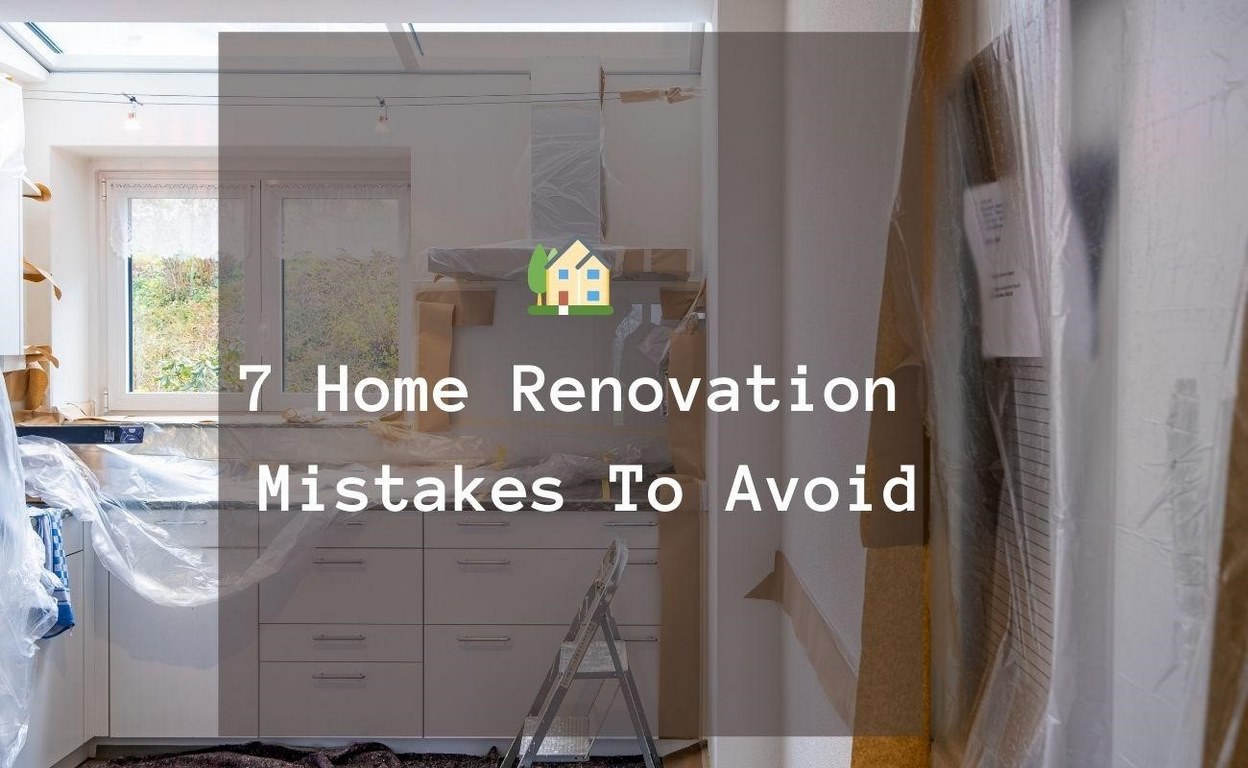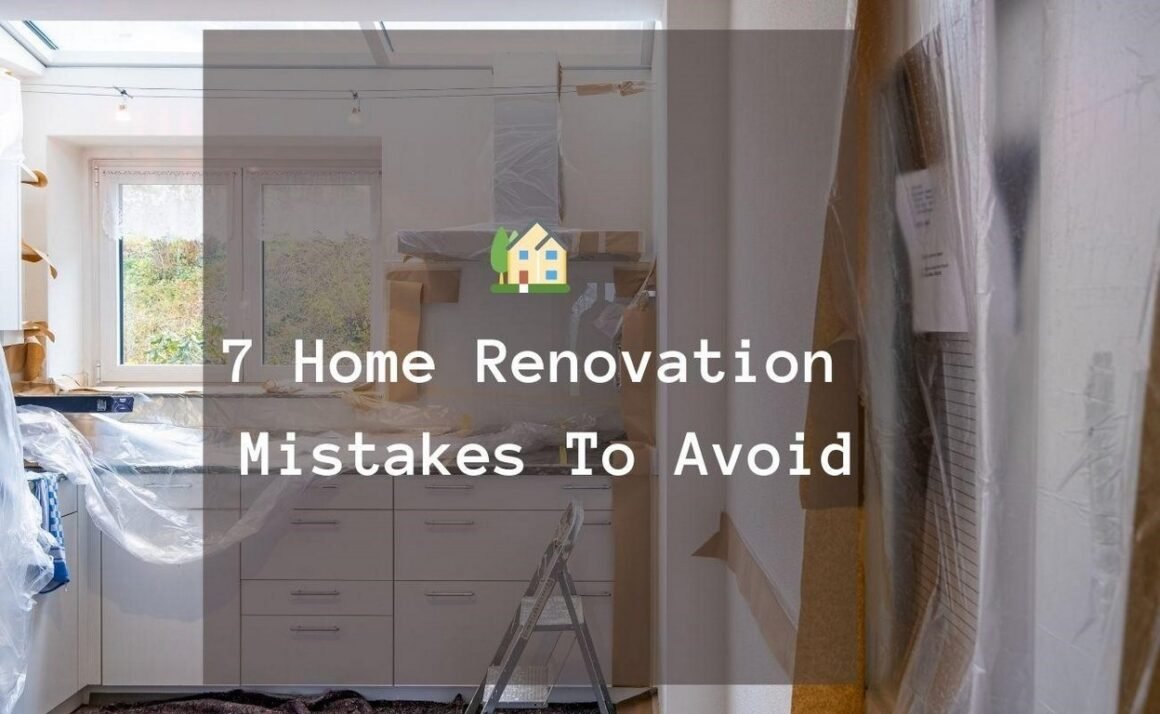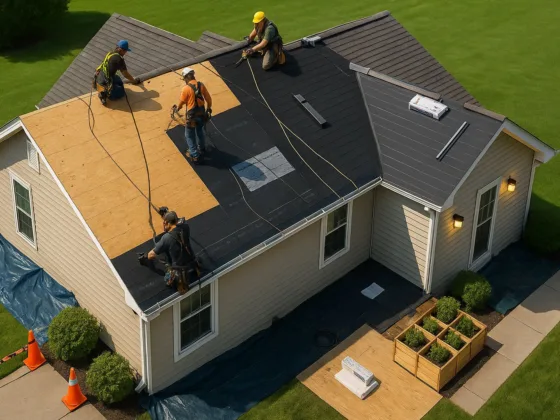Table of Contents Show
Buying and owning a home is a very important aspect of people’s lives. Not only is the place a sanctuary for you and your family, but it is also a crucial future investment.

Since it is such a vital financial asset, many homeowners might do countless renovation projects on it over the years, as it eventually improves the value of the property.
However, not all renovations lead to value appreciation. Some can, in fact, be considered detrimental, lowering the overall value of the property.
To Avoid This Scenario, Here are 7 Home Renovation Mistakes That You Must Steer Clear Of.
1. Luxurious Lighting Fixtures
It’s understandable to go for something bold and beautiful when you are trying to redo the lighting of your house. You might want the lighting fixtures to reflect your taste and personality.
However, in terms of property valuation, it can cause major problems in the long run. Classic mistakes include opting for ceiling-mounted lights in the dining area or perhaps choosing lights that have a complicated mounting mechanism.
While it might be perfect in your eyes, prospective buyers may not agree with your taste. Thus, when your property is up for sale, this update might act more as a liability than an asset.
Moreover, lighting is a trend that keeps changing at a rapid pace. Hence, what might look trendy today might be considered outdated in a decade or two.
Therefore, it’s best to keep it simple and functional when it comes to light fixtures, giving new homeowners the leeway to replace them if required.
2. An In-Ground Pool
Many homeowners consider in-ground swimming pools to be a luxurious status symbol. However, in reality, a pool can be quite polarizing in terms of taste, for some prospective homeowners love it and others don’t. As a result, having a pool on your property can either be a massive asset or a disaster.
Furthermore, there is another reason why realtors discourage a home renovation like this if you want to sell your house with relative ease.
The rationale behind this advice is that potential buyers might be discouraged at the sight of a pool from a financial standpoint, as it translates to high maintenance charges, which, depending on the area, can be pretty exorbitant.
Ultimately, it is entirely the owner’s choice to add this feature to the house, for it can be pretty enjoyable if you are staying there for at least a decade. But it’s equally important to be aware of the potential downside when it comes to selling the house.
Read Also:
3. Bright & Bold Paint Colors
Just like lighting fixtures and home decor, color preferences are also quite subjective and personal.
Depending on the individual, their favorite paint colors can vary widely, with some liking light, simple colors whereas others prefer something dark, bold, or unique. If you fall in the latter category, then it might be wise to repaint your house before you put it up for sale.
Homeowners are advised to not use extremely bright or bold colors as many people might not find it tasteful. Innovative designs, patterns, and paints might be right up your alley, but perhaps a prospective buyer prefers something plain and traditional.
Another factor to consider is home decor, for people also buy furniture, drapes, and other fixtures to match or complement the hues of their rooms.
Thus, always go for a light yet sober paint colors and textures, or get your rooms repainted before putting the house up for sale as a safe bet.
4. Built-in Electronics
As the world is rapidly becoming tech-savvy, smart gadgets are also becoming an integral part of our personal spaces.
Following this trend, many homeowners are now opting for built-in electronics that are a part of their home, adding extra features and modern touch to the property.
It is not uncommon to see various high-end gadgets such as a home theatre with a surround sound system, speakers embedded in the walls, or other hi-tech devices that are considered a constant fixture.
Unfortunately, not everyone is ready to embrace technology with open arms. There are still plenty of potential homebuyers who might find the idea of these hi-tech gadgets distasteful and downright invasive.
Moreover, since people’s decor ideas are highly subjective, many prospective buyers might find these types of equipment unnecessary and would have perhaps preferred more storage space. Hence, it’s best to avoid built-in electronics if you don’t want your property value to depreciate.
5. Hyper Personalisation
In a condensed summary of the above points, many realtors have observed that when a home is too personalized, it becomes harder to sell.
Many homeowners tend to go overboard with customization when they purchase a new property, to further cement the feeling of a home.
While it’s great from a sentimental standpoint, the same can’t be said when the property is assessed in a pragmatic manner.
After all, potential buyers will also look to customize the space to make it their own in every sense of the word. Thus, a property that is already personalized to a great extent might be off-putting for them.
Alternatively, various features like lighting, furniture, decor, and wall paint may just not be to their liking. In conclusion, if you are going for personalization, then make sure that it isn’t a permanent fixture and is ideally something that can be easily transported or sold separately.
6. Using Substandard Materials
Buying and maintaining a house is expensive, particularly if you live in a region with high property taxes. This statement holds true for a home renovation project as well.
Although it might be tempting to save some money and cut corners with substandard materials during a renovation, realtors, and architects really advise against this practice because quality should be non-negotiable.
Homebuyers will always prefer better quality over aesthetics and the usage of poor-quality materials for a home renovation project will be pretty noticeable, turning away a large portion of prospective buyers.
Hence, if you are planning an extensive renovation, it’s better to get it done in stages using quality materials than to complete it all in one go with substandard materials.
If you limit the scope of your project and draft a budget accordingly, then you will achieve the results you desire in the long run without compromising on quality.
7. Too Much Carpeting
Just like pools, carpets are also considered quite classy and affluent. However, they can also receive mixed reactions when you are looking to sell your home.
According to several realtors, a home featuring hardwood or tile flooring is more likely to sell than a carpeted one. From a number’s standpoint, it increases the sale price of a house by almost 2.5 per cent.
Moreover, carpets have their own set of problems. They are harder to maintain and deteriorate much faster than say a hardwood floor.
Another issue is the color and design of the carpets, for they too can be highly personalized in nature, often matching the color of the wall paint or the drapes, for example.
Hence, if a new homeowner wishes to change the wall color or decor, then they would also need to replace the carpets. To strike a balance, you can use rugs or carpets in certain sections of the house that can be easily cleaned and transported.
Conclusion
In the end, if you are looking to sell your property in the near or distant future, then be sure to avoid these home renovation blunders. By being a bit mindful and not going overboard with customization, you can save yourself a lot of grief when you finally decide to sell your place.
Author Bio:
Cinu is a Blogger who has a wide experience of delivering content on law, health, finance, real estate, and technical fields. He is a jack of all trades and always swims against the tides in terms of writing. Follow his latest work here.












